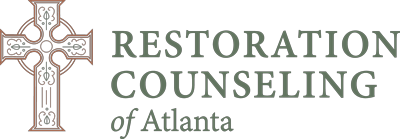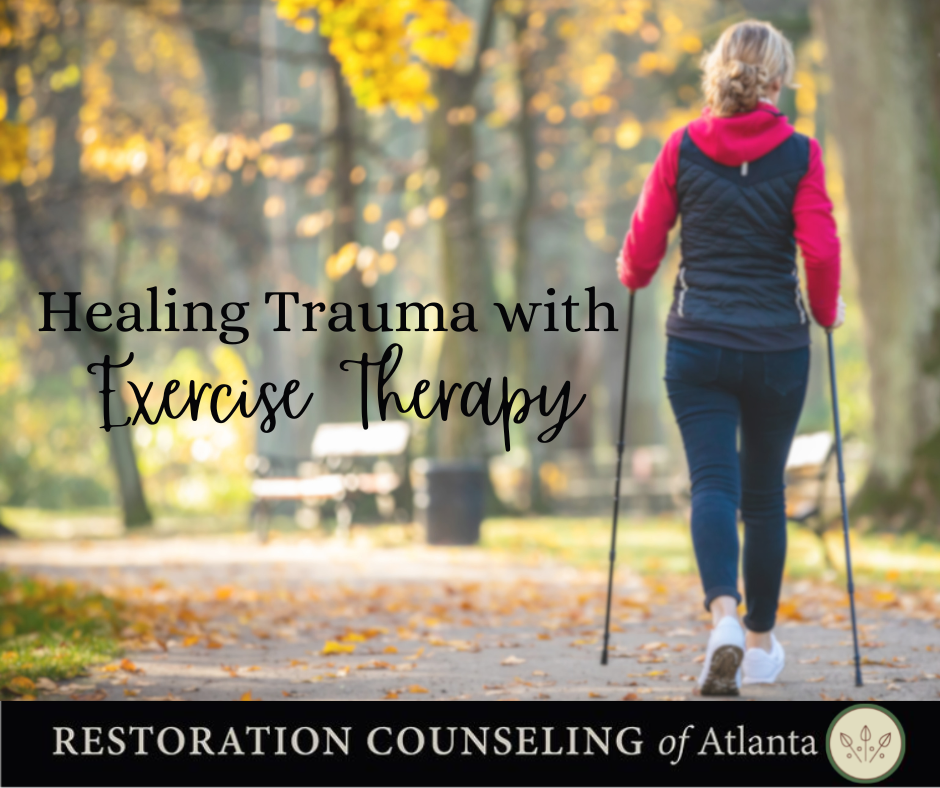Defining Trauma
Trauma is characterized by a sudden (rather than gradual) interruption of a person’s fundamental view of the world (Hays, 138). There are two classifications for trauma: big T and little t. Big T traumas are unexpected events where a person’s life or body is endangered (Keeton). Some examples are “living through natural disasters, catastrophic car accidents, physical and sexual abuse, violent crimes or war” (Keeton). Small t traumas push us past our capacity to cope and cause emotional distress (Keeton). They are not life-threatening events, but are “violations against our self-importance” (Keeton, 68). Examples of little t trauma are financial stress, relational conflict, being bullied, emotional abuse, or loss of a loved one (Keeton). Exercise therapy can be beneficial in helping clients who are processing such trauma.
How Exercise Therapy Helps Trauma
“Therapy helps a person to reconstruct a belief and meaning around the story of the trauma” (Hays, 138). Healing occurs by “increasing one’s ability to tolerate activation around distressing emotions” (Hays, 137). Exercise and movement can be useful for trauma by helping someone regulate their physical arousal, distract them from symptoms, and create a new connection with one’s body (Hays, 138). Bessel van der Kolk states, “Trauma is not just an event that took place sometime in the past; it is also the imprint left by that experience on mind, brain, and body…trauma results in a fundamental reorganization of the way mind and brain manage perceptions…for real change to take place, the body needs to learn that the danger has passed and to live in the reality of the present.”
According to Hays, exercise can have positive “psychological effects on trauma” because it helps decrease anxiety, depression, fatigue, anger, and tension (137). Integrating the mind and body can aid in healing for a trauma survivor (Herman, 1992). Furthermore, movement can encourage trauma survivors to identify themselves as strong and powerful instead of victims (Hays, 70). Hays, author of “Working It Out,” says, “Moving our bodies is one way to help move our minds—just as, in turn, our thoughts and feelings can alter our use of our bodies” (xi). Running and walking are natural forms of bilateral simulation, which uses both sides of the brain. The movement also allows our brains to create new neurotransmitters.
EMDR – Discovered On a Walk
Francine Shapiro discovered Eye Movement Desensitization and Reprocessing (EMDR) while she was out on a walk. This is a type of therapy that has been very helpful for clients with trauma. Here is what Shapiro says about her discovery:
“EMDR is based on a chance observation I made in May 1987. Walking through the park one day, I noticed that some disturbing thoughts I was having suddenly disappeared. I also noticed that when I brought these thoughts back to mind, they were not as upsetting or as valid as before. Previous experience had taught me that disturbing thoughts generally have a certain “loop” to them; that is, they tend to play themselves over and over until you consciously do something to stop or change them. What caught my attention that day was that my disturbing thoughts were disappearing and changing without any conscious effort. Fascinated, I started paying very close attention to what was going on. I noticed that when disturbing thoughts came into my mind, my eyes spontaneously started moving very rapidly back and forth in an upward diagonal. Again the thoughts disappeared, and when I brought them back to mind, their negative charge was greatly reduced. At that point I started making the eye movements deliberately while concentrating on a variety of disturbing thoughts and memories, and I found that these thoughts also disappeared and lost their charge. My excitement grew as I began to see the potential benefits of this effect” (Shapiro, 1995).
Benefits of Walking
Similarly to EMDR, walking uses bilateral stimulation and both sides of the brain to reprocess a thought or memory. Walking also requires optic flow, meaning that “as you walk, your eyes make constant lateral movements to continuously update your brain on where you are in space” (Hike for Mental Health article). For example, your view of a bird you see up ahead changes as you walk. It gets bigger as you move towards it, letting you know you are getting closer (Hike for Mental Health article). “As your eyes move to engage with optic flow, the parts of your brain that process your response to threats become quiet. This altered emotional state, in turn, can affect your thought patterns” (Hike for Mental Health article).
In conclusion, walking and movement can help with processing thoughts and feelings. This form of exercise therapy helps us get in touch with our bodies and be quiet with our thoughts, allowing us to really know ourselves. The better we know ourselves, the more we can let others know us. Our pain loses its hold over us when we can move through it. In The Body Keeps the Score, Bessel van der Kolk describes trauma and the psyche: “The greatest sources of our suffering are the lies we tell ourselves, he’d say, urging us to be honest with ourselves about every facet of experience. He often said that people can never get better without knowing what they know and feeling what they feel.”

Written by Mead Reed, MA, LMFT, LPC
mead@restorationcounselingatl.com, ext. 115
Roswell and Buckhead Locations
Mead’s therapy style emphasizes safety, connection and engagement. Her disarming presence allows her clients to feel at ease as she helps them explore their life story. She encourages clients to name their pain in a way that helps them to be able to bring healing and redemption.

